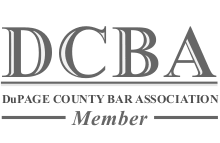What Are the Consequences of Theft Crimes in Illinois?
 Criminal offenses such as theft, robbery, and burglary are often misunderstood crimes because they are frequently lumped together. However, they are different offenses. Under Illinois law, theft occurs any time a person’s actions result in the intentional and unauthorized taking of property or services.
Criminal offenses such as theft, robbery, and burglary are often misunderstood crimes because they are frequently lumped together. However, they are different offenses. Under Illinois law, theft occurs any time a person’s actions result in the intentional and unauthorized taking of property or services.
Theft offenses are typically classified according to the dollar amount value of the item or service stolen and can range from misdemeanors to felonies depending on the circumstances. It is important to know the distinctions between them in case you are ever facing prosecution for theft in Illinois.
What Constitutes Theft?
Illinois law defines theft as occurring when a person knowingly:
- Takes unauthorized control over property of another
- Obtains control over property of another by threat or deception
- Obtains stolen property (knowing the property is stolen, or a reasonable belief that the property was stolen)
It is imperative to know that if the offender is a minor, his or her parent or guardian can be held responsible for the crime. Although it may seem like a minor offense, it can result in serious consequences. Examples of this type of crime include shoplifting, stealing from an employer, or taking unsupervised property from a public place such as a bicycle, a purse, or a wallet.
Illinois Penalties for Theft
Crimes of theft vary and therefore carry different punishments. The consequences depend on the item taken and its value, as well as if it is an offender’s first or subsequent offense. Theft crimes can be classified as misdemeanors or felonies. Under Illinois statute, a person who steals can face the following penalties based on the category:
- Class A Misdemeanor: Items valued up to $500, often referred to as “petty theft.” The punishments include incarceration for less than one year and a fine of no more than $2,500 for each offense, plus reimbursement for the items that were taken.
- Class 4 Felony: The offense was committed in a school or church, or if government property was stolen. If an offender was previously convicted of a theft crime, a Class A misdemeanor can be elevated to a Class 4 felony. Penalties include a sentence of one to three years and a fine up to $25,000, as well as restitution for losses.
- Class 3 Felony: The property stolen was valued at more than $500 but not more than $10,000, plus any property with a retail value of more than $300. Penalties can range from two to five years in prison, a fine up to $25,000, plus restitution.
- Class 2 Felony: Property valued at less than $500 is taken from another individual, or if the property is valued at between $500 and $10,000 and the crime is committed in a school, in a church, or if it is government property. A conviction can result in three to seven years behind bars, a fine up to $25,00, and reimbursement for losses.
Contact a Will County Criminal Defense Lawyer
Theft crimes can involve many different acts, so it is important to understand them in order to avoid facing such charges. The consequences of a conviction can include steep fines and prison time. If you or someone you know is charged with any type of criminal offense, you need strong legal representation. At McNamara Phelan McSteen, LLC, we understand the impact a criminal conviction can have on your record. Our accomplished Joliet theft and burglary defense attorneys will build a solid case to reduce or dismiss your charges altogether. Call us today at 815-727-0100 to schedule your free consultation.
Sources:
http://www.ilga.gov/legislation/ilcs/fulltext.asp?DocName=072000050K16-1
http://www.ilga.gov/legislation/ilcs/fulltext.asp?DocName=072000050K16-3
 815-727-0100
815-727-0100













